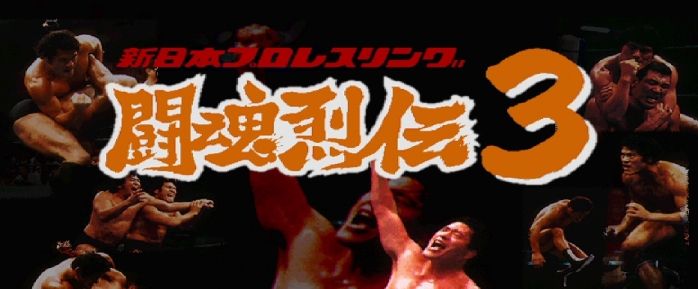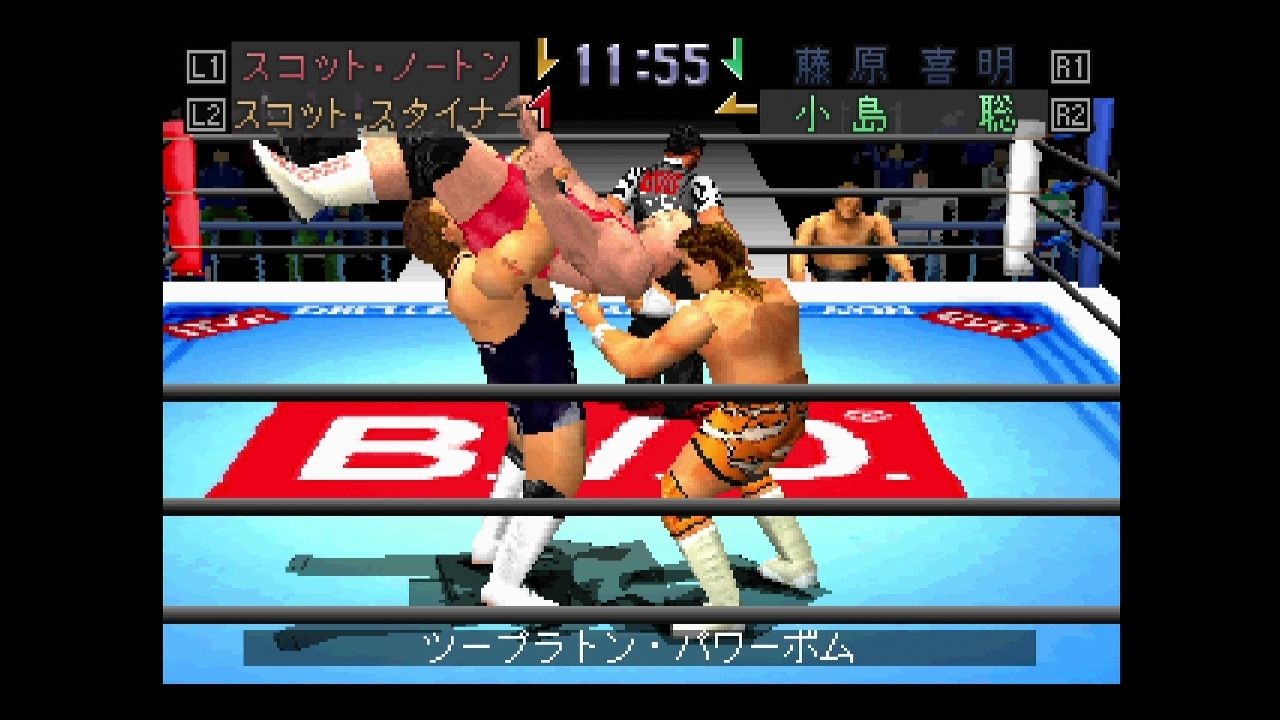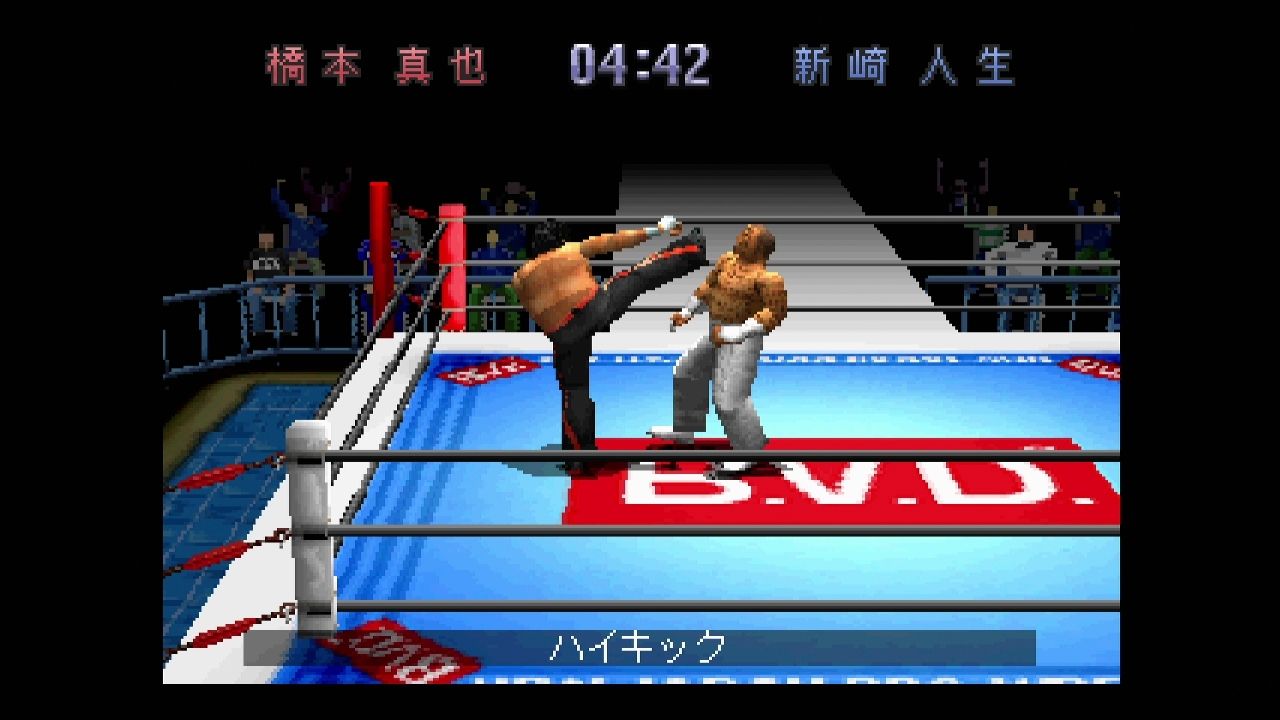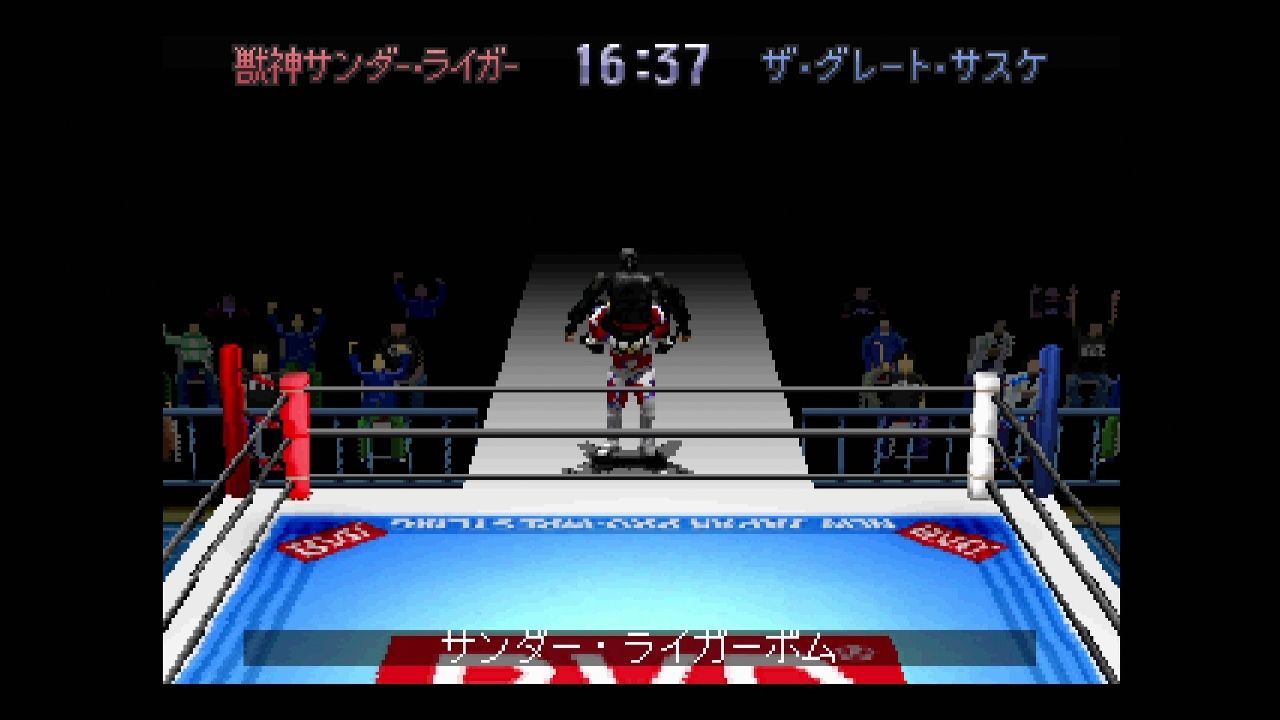Out back of the Hardcore Gamer office you’ll find our Graveyard, where countless long-dead classics lie. We come here to pay our respects, to reminisce, and to wonder aloud what a passing mad doctor might be able do with all these corpses and some high-definition lightning.
With New Japan Pro Wrestling's historic Wrestle Kingdom 11 in the books, it seems fitting to celebrate the company's greatest game in its history. While Yuke's is better known today as the developers of the WWE 2K series, they got their start with Hermie Hopperhead and Toukon Retsuden: New Japan Pro Wrestling on the original PlayStation in 1995. It wasn't a huge import title - but did come out at a great time. New Japan was riding an all-time high in its native country and its partnership with WCW allowed its talent to be exposed on a worldwide stage. A New Japan event with some WCW stars in it from North Korea was even broadcast on North American Pay-Per-View. Toukon Retsuden didn't get a lot of hype, but Gamefan Magazine's profile on it showing the roster was enough to sell me on it - while later codes revealing the legendary Great Muta being playable sold me - it was my first import gaming purchase.
It was an incredible game and while its rock-paper-scissors gameplay style was clunky at times, it was fantastic at actually allowing you to replicate a match and had elaborate ring introductions and excellent sound effects. You could even choose from four different camera angles in real-time. A sequel arrived a year later and offered up far more. This one was as close to a blind buy as I'd had at the time, and off of one screenshot in an ad in Gamefan, I spent $100 on Toukon Retsuden 2 and was treated to an incredible experience. The game featured a gigantic roster, tag team and four way elimination matches (a first for gaming), retained the camera angle switching, brought double team moves to the mix, and featured running grapples and pinning attacks. It also featured an outdoor arena with some jaw-dropping lighting effects for the time.
As great as that game was, it would later manage to be topped with Toukon Retsuden 3. This follow-up arrived in late 1997 and added quite a bit of extra content to the mix. The core gameplay was refined a bit - with faster movement and more fluid transitions. You could now daisy chain some things together if you were playing as a certain character. Scott Norton could snapmare someone and then elbow them on the crown of the head, but while Jushin Liger can snapmare and kick you. Depending on the button you press after the snapmare, you can either do a strike like that or a submission - like a chinlock or neck crank. This allows for matches to flow far better - and when combined with the then-realistic bleeding, you could really have stiff matches that replicated New Japan's hard-hitting style perfectly.
The franchise's dizzying system allowed for movesets to be very diverse depending on how worn down an enemy is, and enemy positioning can also play a part in attacks as well. Basic strikes, grapples, and submissions can be done with a press of X, Circle, and Triangle respectively alongside d-pad movements to add an attack to the mix. Slightly worn-down enemies will stand in place huffing and puffing, opening up more attacks from both the front and back. Finally, enemies that are circling the ring in a daze can be given the game's most powerful attacks - and all enemies in a groggy state can be set up on a top rope and hit with a move like a superplex, frankensteiner, or even a top rope tombstone piledriver.
The frantic four-way matches allow for a lot of drama and last-second escapes. By having someone else in there, you can execute double team moves and if you're lucky, even be saved by an enemy. Four way matches have a lot going on, making the shoulder button-using targeting system a must. Using this allows you to attack different enemies, get a better vantage point for certain attacks, or execute double-team attacks. The game's movesets are incredibly diverse, and features a lot of little hidden things - like the ability to do pop-up attacks when you're downed and possibly even earning a pin. There's nothing quite like being on the ass-end of an ass-kicking and then getting up, hitting Triangle and hitting a rana to win. It's thrilling and adds a lot of excitement to things. The various springboard attacks are also gorgeous - with things like Jushin Liger's springboard rana done by holding Circle and pressing towards a turnbuckle looking better and more realistic than even the animations used in today's Yuke's-developed WWE 2K games. The game's treatment of pro wrestling as more of a logical sport than farce allows the action to feel far more natural than most current games - and little things like the ramp on the stage allow you to do things like suplexes and powerbombs on the apron years before that would be an advertised feature.
Collisions also look fantastic, with strikes combining with sharp sound effect work to make every kick, forearm shiver, slap, and chop sound as devastating as they should. Every wrestlers has moves done in their own style - so no one feels like they're the same even if their styles are similar. The roster is diverse and includes freelancers, wrestlers from Michinoku Pro Wrestling, and even NWO Japan members alongside some New Japan and WCW crossover stars like the Steiner Brothers and Wild Pegasus/Chris Benoit. You can split the rosters up with either heavyweight-only matches, junior heavyweight-only matches, or mix and match to create some truly unique matches - like Shinya Hashimoto battling the Great Sasuke. Because weight has no bearing on attack damage, you just wind up with styles changing and not a direct advantage or disadvantage using a larger character.
Toukon Retsuden 3 is the finest pro wrestling experience available on the original PlayStation and remains a lot of fun to play to this day. With New Japan's current resurgence in the United States, it's a shame this game engine isn't being used for a modern-day New Japan game - as it would be a lot of fun even now, especially with some tinkering being done to make things feel a bit more modern. TR 3 isn't an especially pricey game -- the game alone will set you back $15 or so, while the entire series can be yours for anywhere from $30 to $50 on eBay. Fans of Japanese wrestling over time, or even newer fans discovering it thanks to events like Wrestle Kingdom, should check out the series to get a glimpse of how big New Japan was years ago -- and checking out some older events on NJPW World isn't a bad idea either.




